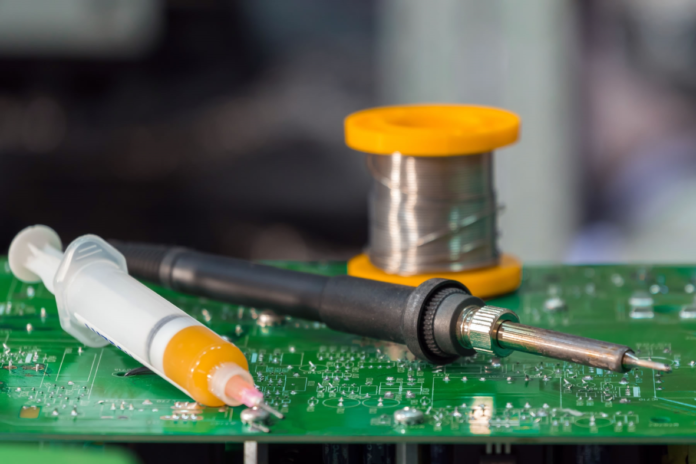IPC J STD 001 is a soldered electronic and electrical assembly standard. The standard includes material specifications, processing requirements, and acceptance criteria. To define the best standards for soldering in the industry, J-STD-001 is critical. It makes sure that the product is of the greatest quality and most reliable under certain environmental circumstances.
What is the purpose of J-STD-001 certification, and why is it important?
J-STD-001 is the joint industry standard for electronic and electrical components categorized into product classes. Electronic goods are classified into three categories: manufacturability, performance requirements, regulatory requirements for systems integration, and verification testing.
Class 1: Items related to electronics in general
Class 2: Electronics used in service
Class 3: High-tech gadgets and devices
Version J-STD-001 A of this standard was initially issued in 1992. Many changes have occurred since then. J-STD-001 H is the most recent version of this document. High-quality soldered interconnections are defined by this standard, which specifies materials, procedures, and criteria for their verification.
The following components are explained in detail in this certification:
- Substance, constituent, and hardware.
- Requirements for soldering and assembling.
- Connection of the terminals and wires.
- Through-hole mounting.
- Requirements for cleaning and removing residue.
- Adhesives, coatings, and encapsulating.
How are J-STD-001 and IPC-A-610 different?
Soldering and PCB assembly are addressed in IPC-A-610 and J-STD-001, both industry standards. Electronic assembly acceptance is performed using IPC-A-610. Furthermore, this standard gives thorough information and illustrations on how to conduct board inspections to ensure that they meet operational categorization requirements.
J-STD-001 is a technical standard that specifies materials and procedures for soldering to guarantee good solder connections and a dependable assembly.
Significant soldering requirements specified in J-STD-001
The significant elements and small provisions are equally weighted in any standard. When discussing soldering, it’s essential to keep in mind the broad parameters set by the joint industry.
Here are some things to keep in mind when soldering:
- To avoid contaminating materials, equipment, and surfaces, it is essential to keep everything clean.
- According to the manufacturer’s recommendations, the heating and cooling speeds should be equal. Thermal shock-sensitive stacked and multilayer chip capacitors are used to defend against temperature fluctuations.
- There should be no harm done to the wires’ strands. The tinned portion of the wire must be coated in solder.
- Before applying the conformal coating and stacking, check the soldering and cleanliness.
- Errors may occur that prevent the assembly from performing as intended in terms of its alignment, form, and function. Such soldering faults should either be reworked or abandoned, depending on the customer’s wishes.
- AOI should be used for visual examination.
- The base metal can be accommodated in the conductors, component lead patterns, and solder mask designs according to specification.
Wires, strands, lead formation, faults as per material classifications, holes, lamination, etc., have various requirements. This criterion must be followed, and results and findings must be appropriately documented.
Industry-wide Consensus for Space Applications
IPC has established the J-STD-001ES standard for use in space addendums. It comprises several different processes. The following are a few of the most significant:
- Corrosion
A red plague management strategy that the end-users have approved is required to use silver-coated copper conductors. This strategy aims to keep latent damage from developing and the buildup of cupric oxide corrosion to a minimum.
- Materials
There should be a specified method for validating and documenting process modifications when significant components of the processes are altered. Standard recommends solder alloys such as Sn60Pb40 or Sn96.3Ag3.7. Also suitable are solder alloys with long service life, high performance, and high dependability.
- Flux
Flux is divided into Rosin and Resin, with activity levels ranging from L0 to L1 according to J-STD-001ES. Testing for process compatibility is critical when employing changes with varying activity levels.
Performing tests on the solder paste are also essential to determine whether or not oxidation-induced paste spread and solder ball formation are present.
Thermal Protection and Chemical Strippers
After the soldering process on a PCB is complete, the flux is removed using chemical strippers. Chemical solutions, pastes, and creams are all examples of these. The use of chemical strippers should cause no deterioration or harm.
The component must be protected from overheating and thermal shocks while soldered or reworked. This is accomplished by using a heat sink, thermodynamic shunt, or preheating.
To avoid any danger, make sure the heat sensitivity levels of the component parts are examined, and the appropriate standards are followed.
Assemblies of Particulate Matter
Assemblies containing particulate matter must be clean and devoid of contaminants such solder pellets, solder splashes, and wire clips. To assure the integrity of the connection, solder balls may be used if a carefully documented specialist procedure accompanies them.
In order to confirm this, data should be generated and maintained for review and maintenance by an appropriate procedure. It is considered a defect if the minimal electrical gap is not fulfilled.


